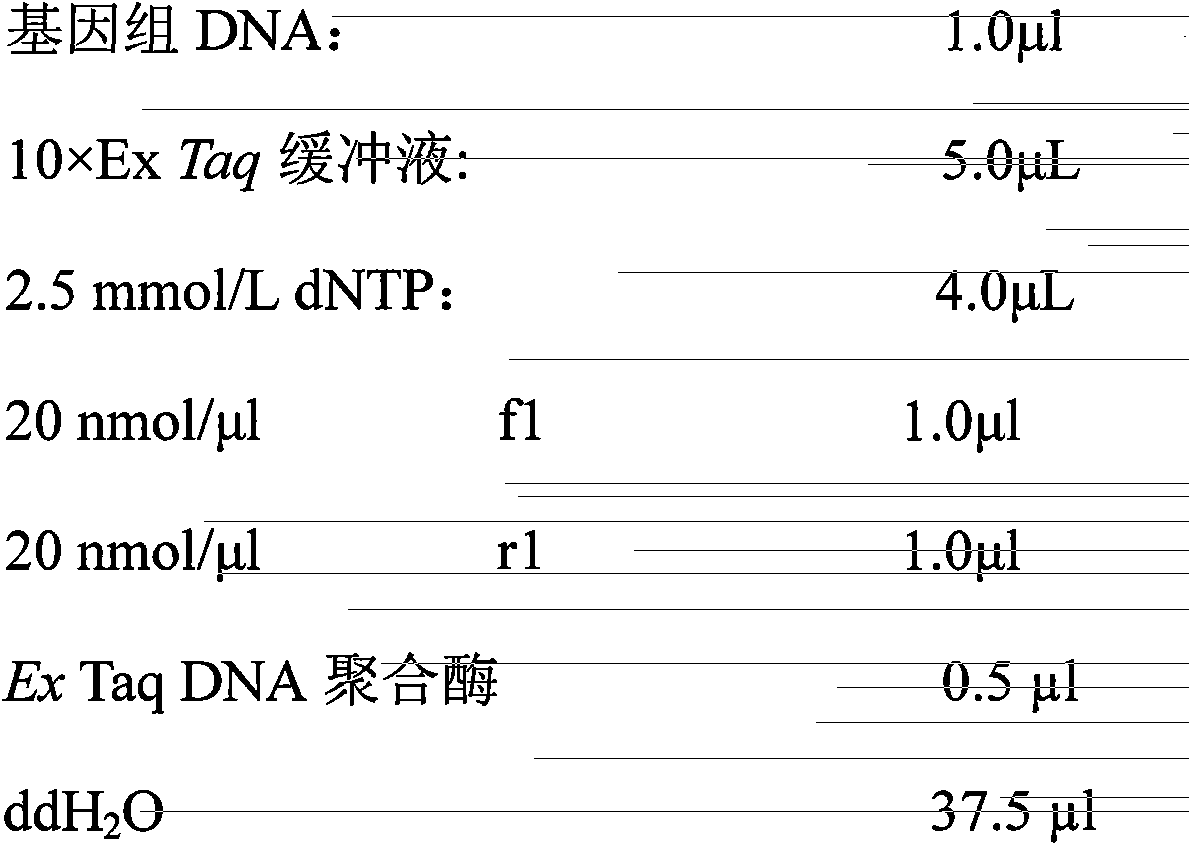Marker and primer for detecting pediatric asthma
A childhood asthma and marker technology, applied in biochemical equipment and methods, microbial determination/examination, DNA/RNA fragments, etc., can solve problems such as lack of correlation, difficulty in bronchial provocation test, and difficulty in diagnosing asthma in children , to achieve the effect of high sensitivity
- Summary
- Abstract
- Description
- Claims
- Application Information
AI Technical Summary
Problems solved by technology
Method used
Image
Examples
Embodiment 1
[0016] Embodiment 1: the selection of children with asthma and contrast
[0017] According to the diagnostic criteria of the Guidelines for the Diagnosis and Prevention of Bronchial Asthma in Children (revised in 2008), clinicians in the Respiratory Department of Children's Hospital and the Capital Institute of Pediatrics selected 230 children with asthma who met the criteria, aged ≤15 years old. A total of 205 healthy children matched in age, sex, and asthma group were selected as the control group.
[0018] The determination of cases depends on the age of the child and selects different criteria:
[0019] Diagnostic criteria for asthma in infants and young children: (1) age < 3 years old, wheezing attack ≥ 3 times; (2) wheezing sound heard in both lungs and expiratory phase during the attack, and the expiratory phase is prolonged; (3) having an atopic constitution, Such as allergic eczema, allergic rhinitis, etc.; (4) parents have a history of asthma or other allergies; (5)...
Embodiment 2
[0021] Example 2: Collection of blood samples and detection of biological indicators
[0022] The venous blood of the research subjects was drawn to detect the total IgE in the serum, and this part of the detection work was assisted by the hospital.
[0023] Analytical method: Western blot method was used to quantitatively detect the total IgE level in serum.
[0024] Specific operation method: extract 1ml of venous blood from the patient, separate the serum, take 250 μL and incubate with the nitrocellulose membrane adsorbed with specific allergens in the reaction tank at room temperature for 45 minutes, add biotin-labeled anti-human IgE antibody after washing, and incubate at room temperature After 45 minutes, the unbound secondary antibody was eluted, and streptavidin conjugated with alkaline phosphatase was added, and then incubated at room temperature for 20 minutes, the unbound enzyme was washed away, and the substrate was added to develop color. All incubations were don...
Embodiment 3
[0025] Embodiment 3: blood sample collection and storage
[0026] Draw 1ml of venous blood into an EDTA anticoagulant tube, mix it upside down to prevent the blood from coagulating into clots. The blood was transferred to a 1.5ml centrifuge tube and centrifuged at 2000rpm for 10 minutes, leaving a layer of plasma for DNA extraction. If the genomic DNA cannot be extracted on the same day, the blood sample extracted within one week can be stored in the refrigerator at 4°C, and the blood sample extracted within one month should be stored in the refrigerator at -20°C, and the extraction time should be longer Blood samples should be stored in a -70°C refrigerator.
PUM
 Login to View More
Login to View More Abstract
Description
Claims
Application Information
 Login to View More
Login to View More - R&D
- Intellectual Property
- Life Sciences
- Materials
- Tech Scout
- Unparalleled Data Quality
- Higher Quality Content
- 60% Fewer Hallucinations
Browse by: Latest US Patents, China's latest patents, Technical Efficacy Thesaurus, Application Domain, Technology Topic, Popular Technical Reports.
© 2025 PatSnap. All rights reserved.Legal|Privacy policy|Modern Slavery Act Transparency Statement|Sitemap|About US| Contact US: help@patsnap.com



